One sad part of living in Southwestern Ohio (besides the weather) is the region’s distinct lack of carnivorous plants. We envy folks fortunate to have native species growing practically in their back yards, or within a short drive.
One day we headed north to hike at John Bryan State Park. Inside the visitor center, there was map of all the state parks in Ohio hanging on the wall, several of which had the word “Bog” in the title. Bogs in Ohio?! This was worth checking out.
Turns out, Ohio does have bogs
In fact, Ohio used to have a ton of bogs, many of which were part of The Great Black Swamp until it was drained to make room for farmland. Today only a few bogs remain, spread throughout the middle and northern parts of the state. Not every bog has carnivorous plants, but to our excitement some of them do! Ohio’s bogs are home to several species of carnivorous plants including Sarracenia purpurea, Drosera rotundifolia, Drosera intermedia, and a few types of Utricularia.
Cedar Bog err… Fen
The first stop on our travels took us to Cedar Bog northeast of Dayton. Cedar Bog is the largest fen in Ohio.
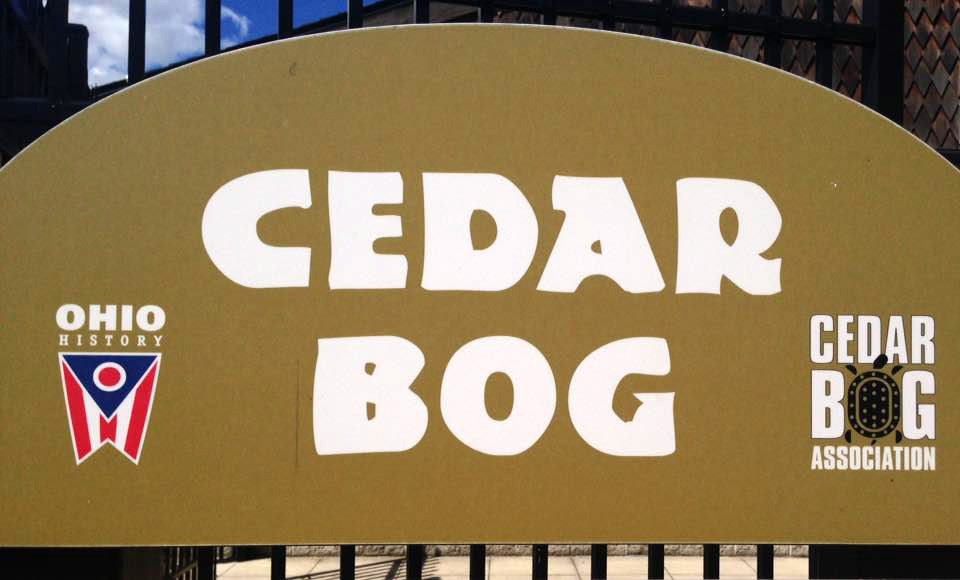
Why the state decided to call a fen a bog is a bit confusing.
Cedar Bog has a boardwalk that allows visitors to explore the area while minimizing damage to the environment. From our research, we knew that D. rotundifolia and a species of bladderwort were in the area…but didn’t know where exactly to look. We moved slowly, but eventually transitioned from the wooded area into a grassland with plenty of sun. A little green flash in the sea of brown caught our eye, it was Drosera rotundifolia!

Drosera rotundifolia next to the boardwalk in Cedar Bog

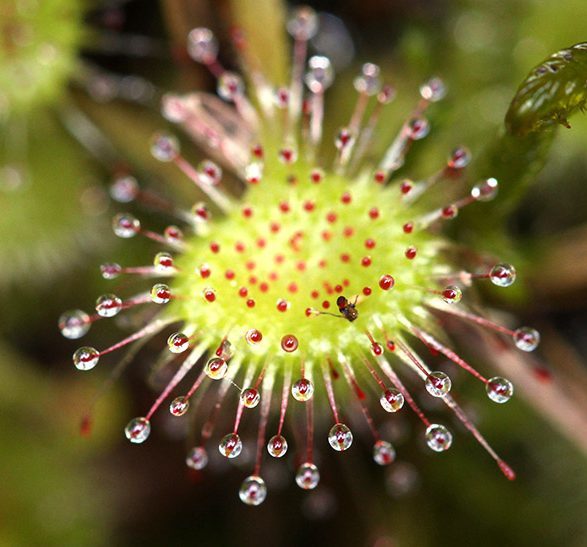
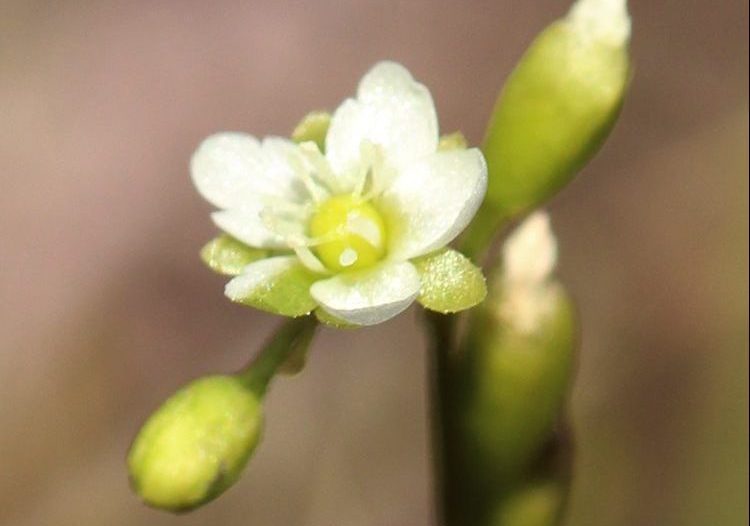
D. rotundifolia Flower

Chowing down on a bug
Soon, we were seeing the little guys everywhere and even found a patch of sphagnum moss growing nearby. A group of college students wandered by and asked what we were looking at. We explained we were looking for carnivorous plants and had found some! With a lifeless tone, one of the students said, “Oh yea, I heard those types of plants were out here” and walked away without even looking. The lack of enthusiasm nearly crushed us. We quickly recovered however and enjoyed the rest of our time in the fen before pressing on to the next stop.
Brown’s Lake Bog Preserve
Brown’s Lake Bog Preserve is an actual bog near Wooster, Ohio. It’s unique in that it is a kettle bog. Kettles are large holes left by receding glaciers. Kettle bogs form when the hole fills with rainwater and then becomes acidic from decomposing plant matter.

We made it to the bog in the early evening and were the only ones there. After walking a short ways through the woods on a rickety boardwalk, we arrived at the kettle portion of the bog which was mostly covered in a mat of Sphagnum Moss and ferns.
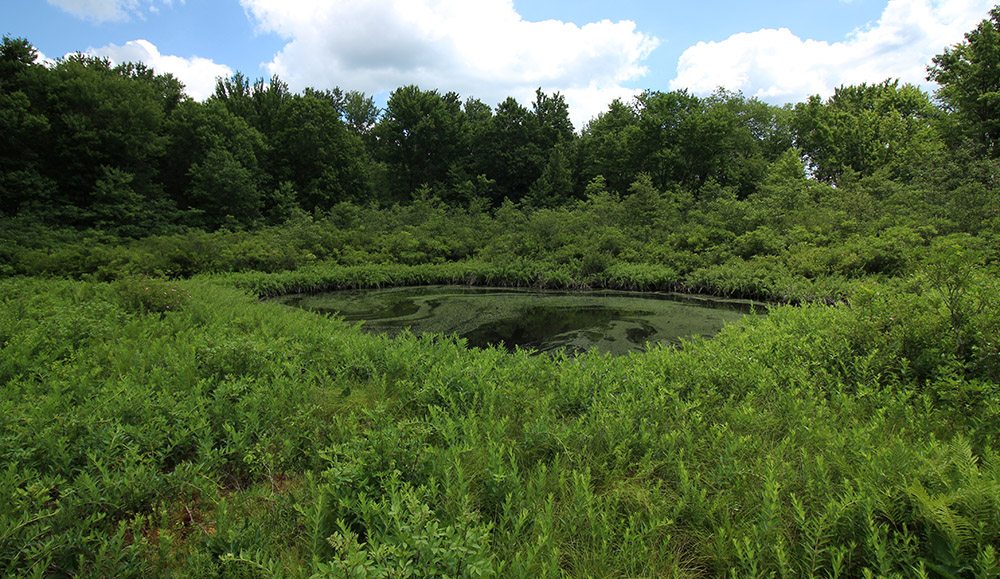
It didn’t take long to find what we came for; dozens of S. purpurea poking out of the moss near the boardwalk!
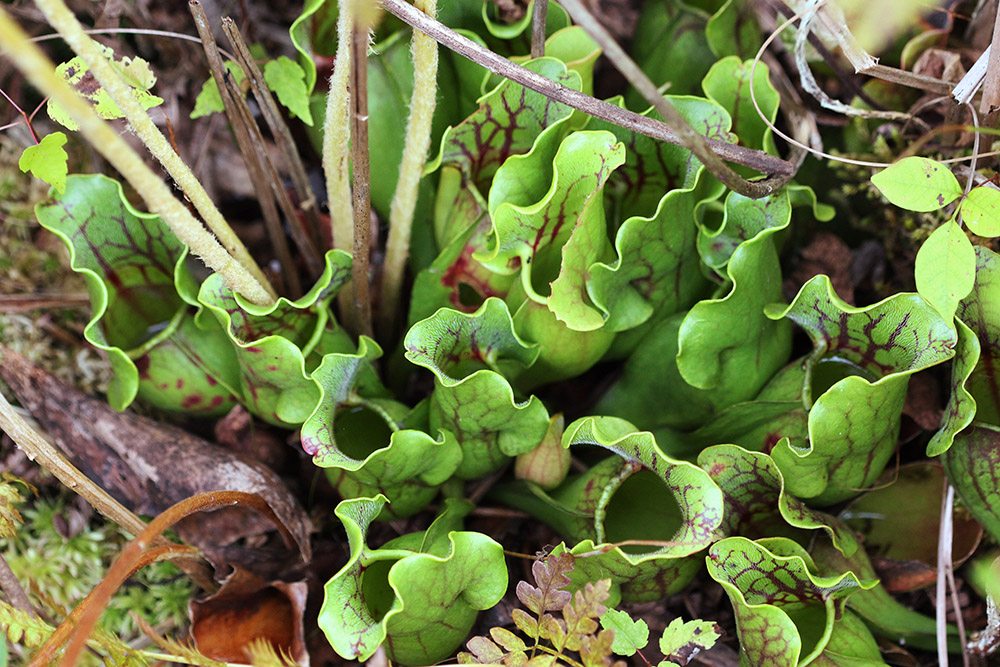
A Sarracenia purpurea clump on a mound of Sphagnum Moss


Some grew as individual plants and others clumped together in mounds of Sphagnum Moss. Most were bright green, but several had beautiful purple and red veining. Once again, we were blown away that these plants grow in the wild right here Ohio.
A note on conservation

The fens and bogs of Ohio are beautiful and each is unique. We’re glad there are still a few to visit, but most of these fragile systems are extremely small and threatened. Some suffer from natural processes like forest encroachment and others are affected by agricultural runoff which changes the water chemistry. If you’d like to help preserve these unique places and the amazing carnivorous plants living within them, please see The Nature Conservancy for more information.


Suggestions for purchasing picture plants native to ohio
We have some S. purpurea pitcher plants available for sale on our website. This is the type of pitcher plant that can be found in Ohio.
https://curiousplant.com/shop/north-american-pitcher-plants/
Hi! I am also wanting to grow pitcher plants on my property in Southeastern Ohio, I have not yet tested the soil, but if one carnivorous plant grows there, is that a good sign that I have the right soil? We have bladderwort floating in the pond every summer. We call it the “swamp” because we are not sure how to properly classify the area yet, but the water comes from a combination of rainwater and underground springs. Thanks!
Hi Sarah, thanks for your question! If other carnivorous plants are growing in the soil already, S. purpurea pitcher plants would likely do well there also. If the bladderworts floating in the pond are the ones you are referring to, it’s a little harder to say for sure since they are in the water rather than directly in the soil.
Can sundew or pitcher plant be transplanted from a commercial source to my itty bitty back field fen?
Hi Kathlyn, thanks for your question. Survival would depend on your hardiness zone and the specific soil conditions on your property. Thank you!
Can u eat pitcher plants like salad
As far as we know Sarracenia are not considered poisonous, however I wouldn’t recommend eating them before doing thorough research to ensure they would be safe for human consumption.
Cedar Bog is in Urbana, Ohio and is a bog. The wetland on the east side of Dayton is called Woodman Fen and is a fen.
Thanks for pointing out the direction error, we corrected it! Cedar Bog is in fact a fen though. It states this on the Cedar Bog website and there are signs posted at the preserve as well.
The sign is gone from route 235. How do you access the big?
If you are wondering how to get to Cedar Bog, a quick map search should pull it up or call their visitor center for directions from your location: 937-484-3744.
Can you grow these in a native forest with a wet land no standing water for 5 months of the year but ground very moist and soft
Hi Stuart, that really depends on the soil composition of the wetland. These types of carnivorous plants require acidic soil that is low in nutrients.
My woodland is mainly beach and maple trees. What would be the best way to carry out an acidity test.
I believe you can purchase basic soil test kits online though they aren’t the most accurate. If you want to get a thorough analysis, you would need to send samples to a soil testing lab.
So far as I know, they do best in poor soil conditions with lots of water & the vast majority of Ohio has poor soil conditions, so they ought to do fine just about anywhere- moreso if you place them near water, where water tends to collect or happen to live in/ near swampland.
However, there are subspecies to the pitcher plants. You want to make sure you get the Sarracenia Purpurea Purpurea variety instead of one of the other two subspecies.
Beautiful plants! Planting these ‘insect trappers’, would provide a very, very low cost, natural & a no maintence service, for both Ohio government & Ohios citizens. Planting them around standing bodies of H2o &/or placing them in various areas of the H2o, could greatly reduce the # of Infectious Mosquito bites.
Just a thought?
Joyce Ann Anderson
Thanks for your comment, Joyce! Mosquitoes actually aren’t a main food source for these types of carnivorous plants. They may snag a few here and there but gnats, moths,various crawling insects, and some leaf litter make up the majority of their diets. More of these plants in their native habitats would be an improvement for the species populations though!